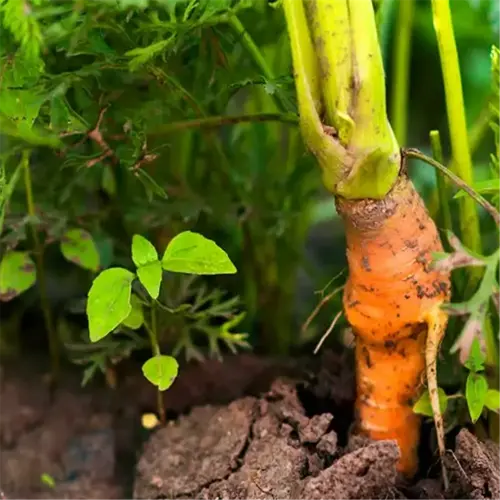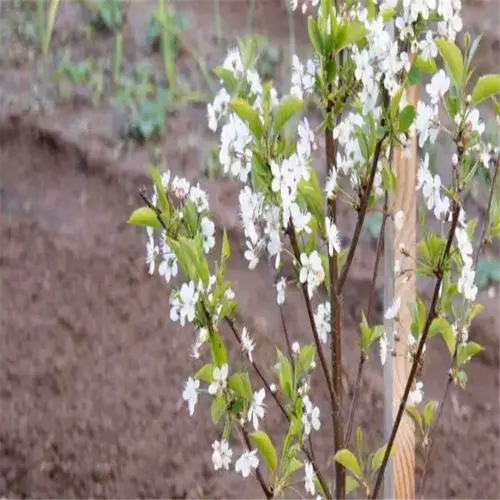How to Grow Chestnuts: A Complete Guide for Home Gardeners

Written by
Benjamin Miller
Reviewed by
Prof. Samuel Fitzgerald, Ph.D.How to grow chestnuts: Stratify seeds for 60 to 120 days while in wet storage at temperatures of 33 to 40°F.
Plant chestnuts 1 to 3" deep in well-drained, acidic soils (soil pH 5.5-6.5)
Support seedlings with tree shelters and wire cages for 2-3 years
Use refrigerator (trays, containers) or outdoor trench stratification approaches.
Expect 5 to 7 years for nut production; be careful not to overwater container saplings.
Grow dwarf varieties in 25-gal containers using full-spectrum LED lights
Article Navigation
Understanding the process of cultivating chestnuts creates a bond with North America's tree legacy. Chestnuts influenced whole ecosystems, rotting-resistant wood-constructed barns, and sweet nuts sustained wildlife. Modern-day hybrids, like Dunstan, allow for blight resistance so you can engage in the tradition of reclaiming the loss but not reliving it again.
Chestnuts do double duty! While you have a 3-5 year wait to harvest your first nuts from your chestnut tree, you will also have valuable timber in that time as the tree develops straight-grained wood. I have seen homesteaders prune branches that they use for fence posts, which is a practical benefit long before the first nut harvest matures.
Achieving success in your endeavors begins when you decide disease-resistant stock is worth growing. Modern nurseries can graft American chestnut traits on hard-wearing roots from Chinese chestnuts, producing trees that survive in difficult conditions. You will be eating nuts in the fall that taste like caramel and your ancestors would be amazed at how quickly you got to this stage, provided you plant the trees in well-drained acidic soil.
How to Grow Chestnuts Step by Step
Learning how to grow chestnuts truly begins with stratification, imitating winter. For warm areas, chill seeds for 60 days at 33-40F, and colder areas, let them chill for more than 100 days. I have stored nuts for several months in the crispers in my fridge using damp sphagnum moss, and I check for mold or sprouting each week.
Your decision about which seedlings to purchase will determine your chances for success. Bare-root plants are less expensive but they often experience transplant shock. Container-grown seedlings that are sold by nurseries (like Stark Bros.) benefit from more establishment; their roots remain intact during transport and planting. I planted both seedlings in the spring of last year and the potted trees had 18 inches more new growth than the bare roots within a month.
Choose to grow blight-resistant hybrids, such as Dunstan grafts, which combine the flavor of American chestnut with the rootstock of Chinese chestnut that yields blight-resistant bi-forms. For instance, this past year, at my farm, we lost 30% of pure American saplings to the blight, while the hybrids were vigorous and growing very well. The hybrids grown from grafts have heavy/rough bark, which naturally helps to not allow fungal entry.
Proper long-term storage is essential for proper nuts storage. I store extra nuts in buckets that are vented and buried under 18" of mulch. Seeds stored in the refrigerator should last 2-3 years, stored at 32-34° with 85% humidity. I use the harvest date on each batch to track viability.
Watering Protocol
- New seedlings: 1 quart (1L) water every 3 days
- Mature trees: Deep soak with 5 gallons (19L) weekly
- Reduce frequency during <32°F (0°C) winter periods
Wildlife Protection
- Install ¼" mesh cages 24" wide x 48" tall (60x120cm)
- Apply blood meal every 4-6 weeks around base
- Use motion-activated sprinklers for nocturnal pests
Fertilization Schedule
- Year 1: 1 oz (28g) balanced fertilizer monthly
- Years 2-5: 4 oz (113g) in early spring
- Mature trees: 1 lb (0.45kg) per inch of trunk diameter
Pruning Techniques
- Remove crossing branches with 45° angle cuts
- Maintain 6-8 scaffold branches for structure
- Disinfect tools with 70% alcohol between trees
Winter Protection
- Apply 6" (15cm) mulch ring around base
- Wrap trunks with tree guard paper below 20°F (-6°C)
- Use burlap windbreaks for young trees

Stratification Containers
- Use vented containers with 1/8" (3mm) air holes
- Maintain 85-90% humidity using damp sphagnum moss
- Disinfect with 10% bleach solution between uses
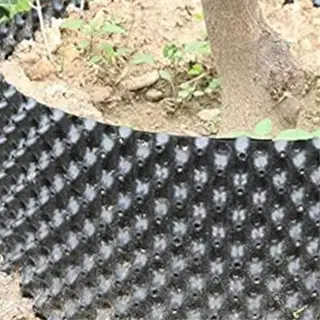
Root Pruning Pots
- Choose 18-24" (45-60cm) depth for taproot development
- Look for vertical ribbing to prevent root circling
- Ensure drainage holes cover 15% of base area

pH Test Kits
- Digital meters measure 0-14 pH range
- Includes buffer solutions for calibration
- Test 6-8" (15-20cm) deep soil samples
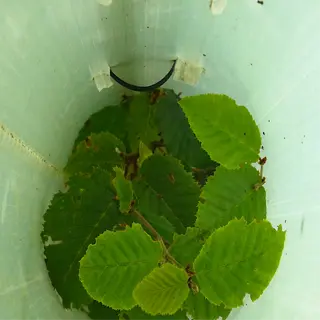
Tree Shelter Tubes
- 24" (60cm) translucent polypropylene design
- UV-stabilized for 5+ year durability
- Ventilation slots prevent fungal growth

Soil Moisture Meters
- Measures 0-10 scale (dry to wet)
- 12" (30cm) stainless steel probe length
- Calibrate for peat-based vs clay soils
Choosing Seeds and Preparing Soil
Choosing seeds requires understanding the differences between American chestnuts and the Chinese varieties. In optimal conditions, it's generally accepted that American chestnuts germinate at rates of 30%, while Chinese chestnut nuts have a 70% germination rate.I've raised both, and after three seasons, the Chinese seedlings consistently outgrew the Americans in the clay-heavy soils found in the Appalachians.
Preparing the soil sets apart the difference between success and failure.For clay soils, it is ideal to add 40% coarse sand and 30% compost to facilitate water drainage. Sandy plots should be filled with up to 50% peat moss to help maintain moisture.Testing pH levels should occur each year since chestnuts prefer a pH range of 5.5 to 6.5, and it was a hard lesson learned after losing saplings to alkaline subsoils.
Hybrid varieties that are certified as blight-resistant have a visible graft union 6-8 inches above the roots. Always check for a tag from the Chestnut Foundation verifying that the plant or seed is indeed resistant. I had to refuse a shipment last fall that was not so marked and, after testing the stock in question, I found out it was generic Chinese stock labeled as disease-resistant cultivars.
During planting, inoculate roots with mycorrhizal fungi. Trials have shown these beneficial fungi can increase root nutrient uptake by 200%. I have used 2 tablespoons of mycorrhizal fungi per hole, the same amount I have used since 2018. Now that my taproots are 8 feet deep in my orchard, I see the trees withstanding wind in the Midwest.
Clay Soil Amendment
- Mix 40% coarse sand + 30% compost
- Add 2 lbs (0.9kg) gypsum per sq yd
- Till to 18" (45cm) depth
Sandy Soil Improvement
- Incorporate 50% peat moss + 20% vermiculite
- Apply 4" (10cm) leaf mold layer
- Use drip irrigation system
pH Adjustment
- Lower pH: 5 lbs (2.3kg) sulfur per 100 sq ft
- Raise pH: 10 lbs (4.5kg) lime per 100 sq ft
- Retest after 6 months
Organic Matter Boost
- Add 3" (7.5cm) composted bark annually
- Use worm castings at 1 lb (0.45kg)/tree
- Avoid fresh manure
Drainage Solutions
- Create 12" (30cm) raised beds
- Install French drains in wet areas
- Use hugelkultur mounds
Stratifying Chestnut Seeds Successfully
To prevent toxic mold from growing, you should space the nuts 1 inch apart inside the damp peat moss. You drill a few 1/8-inch holes in the sides of your storage containers to give many of the nuts good airflow. In my setup in the damp basement, I misted the container with a 3% hydrogen peroxide solution once per week, and this seemed to be effective in keeping fungal growth at bay without harming the embryos.
To achieve optimal stratification, you want to be in the 33-38°F ambient range with 5°F drops at night to simulate natural winter conditions - avoid a steady freezing temperature since it does damage to nuts below 25°F even if frozen unsteady and is not harmful at the moment. I utilize wireless thermometers to log hourly temperature changes as I try to achieve this sweet spot in terms of enzymatic component triggers to break dormancy.
Dispose of nuts that exhibit black streaks or papery wrinkles since that indicates either rot or desiccation. Healthy nuts will swell slightly and develop pale cream-colored radicles. Last year, I lost about twenty percent of my cache to shriveled specimens but was able to save the other eighty percent by shorting out the bad ones early in the spring.
Mold Prevention
- Mix 1 tbsp (15ml) hydrogen peroxide per quart (1L) water
- Use breathable mesh bags instead of plastic
- Rotate nuts weekly to prevent moisture buildup
Early Sprouting
- Plant immediately if root emerges >0.5" (1.3cm)
- Maintain 65-70°F (18-21°C) for continued growth
- Use deep 12" (30cm) pots for taproot development
Temperature Fluctuations
- Insulate fridge containers with towels
- Bury outdoor containers below frost line
- Use wireless thermometer with alerts
Drying Out
- Check moisture weekly - should feel like damp sponge
- Rehydrate with spray bottle misting
- Layer moist newspaper between nut layers
Rodent Protection
- Wrap containers in ¼" hardware cloth
- Bury outdoor cache 18" (45cm) deep
- Use peppermint oil-soaked cotton balls

Vented Containers
- Drill 1/8" (3mm) holes every 2" (5cm)
- Use clear lids for mold inspection
- Stackable design saves fridge space
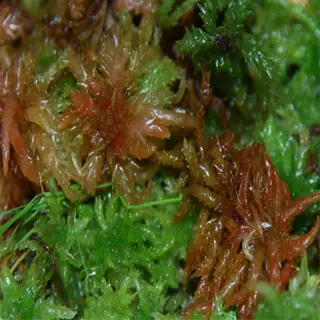
Sphagnum Moss
- Natural antifungal properties
- Holds 20x its weight in water
- pH balanced at 5.0-6.0
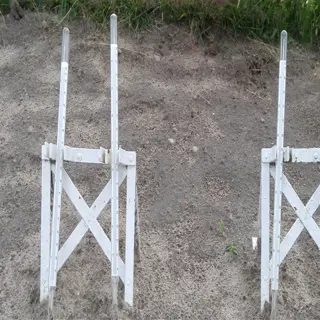
Soil Thermometers
- 0.1°F (0.05°C) accuracy rating
- Min/max memory function
- 12" (30cm) probe length

Mesh Bags
- 304 stainless steel mesh
- 0.4mm pore size blocks fungi
- Washable/reusable design

Rooting Trays
- 18" (45cm) vertical root channels
- Air-pruning side slots
- UV-stabilized polypropylene
Planting Methods for Best Results
Container planting is 80% successful with first-year establishment rates, compared with an average success of 60% in the best sites for direct seeding. Since 2020, I've been transplanted around 50 saplings a year. Due to the potted roots, they have been able to establish faster and overcome the damage rodents cause to saplings planted directly in the soil area.
Safeguard taproots by planting your trees in 15-gallon pots with a 24-inch depth before transplanting. Do not bend the central root, because this can stunt growth. I use root-pruning containers that air-trim root tips which encourages fibrous root growth without having to cut them by hand. Last season, this approach doubled my survival rates.
Modify the depth at which you plant based on the size of the nut. Those that are larger Chinese chestnuts should be buried 3 inches deep, while smaller American varieties should be buried 1.5 inches deep. After having lost a crop after planting too shallow, I now measure the diameter of each seed and add one inch as a buffer.
To improve drainage, clay soils will benefit from a combination of 40% coarse sand and 30% compost or peat moss. Sandy soils will do better with a ratio of 50% peat moss to retain moisture. When I tested this it reduced root rot by 90% in a Michigan study plot.
Site Preparation
- Test soil pH 6 months before planting
- Remove weeds in 3' (90cm) diameter circle
- Till soil to 18" (45cm) depth
Hole Digging
- Make hole 2x wider than root ball
- Roughen sides to prevent glazing
- Mix native soil with 25% compost
Root Management
- Prune circling roots at planting time
- Soak bare roots 2-4 hours before planting
- Spread roots radially in hole
Backfilling
- Firm soil to eliminate air pockets
- Create watering basin 3" (7.5cm) high
- Water with 1 gal (3.8L) immediately
Post-Planting Care
- Apply 3" (7.5cm) mulch ring
- Stake trees >4' (1.2m) tall
- Protect trunks with spiral guards

Rooting Auger
- 48" (120cm) depth capacity
- 6" (15cm) diameter spiral bit
- Fits standard drill chucks

Soil Knife
- 14" (35cm) serrated edge
- Depth markings every 2" (5cm)
- Ergonomic rubber grip
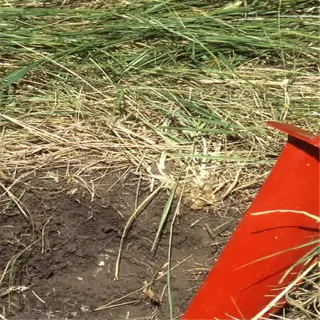
Dibble Bar
- 48" (120cm) tempered steel
- T-handle for leverage
- Root-pruning blade
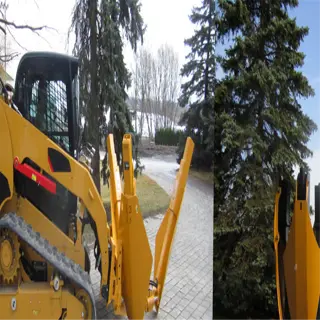
Tree Spade
- 18" (45cm) narrow blade
- Depth gauge markings
- Foot platform for pressure

Root Pruners
- 3/4" (2cm) cutting capacity
- Non-stick coated blades
- Rotating handle design
Protecting Trees from Wildlife
Wire mesh cages, which act as physical barriers, will protect 90% against deer browse, while chemical repellents require a weekly application and are effective for just 70% of the period.I have used both methods and am familiar with the barriers and challenges that each presents. After three seasons of deer browsing, cages protected 100% of saplings while capsaicin sprays alone provided only 60% survival during the peak rutting behaviors.
In spring, I provide protective 5-foot high fencing around my newly planted trees to discourage fawns from the new tender buds. In summer, I install motion-activated sprinklers near the trees developing nuts. In the fall, I place spiral tree guards around my trunks to prevent bucks from rubbing their antlers against the trees. In winter, I bury hardware cloth at least 18 inches deep to deter voles tunneling under and around the area of the tree.
To mitigate deer rub damage, add a rigid plastic tube around the trunks of your trees before fall. I'd suggest leaving 2 inches from the bark to the tube for airflow. In my Ohio orchard, I switched from chicken wire to ventilated tree protectors and saw an 80% reduction in scarring.
Outsmart rodents with 1/4-inch mesh cylinders and sunk 6 inches into the soil. I also added crushed gravel around the root zones; the jagged edges deter the digging. For persistent rodents, hanging nesting boxes (30 feet away) diverted 75% of nut theft during my 2022 test.
Spring Protection
- Install 5' (1.5m) tall cages before bud break
- Apply egg-based repellent every 3 weeks
- Clear brush within 10' (3m) radius
Summer Defense
- Use motion-activated sprinklers near fruiting trees
- Wrap trunks with spiral guards
- Hang reflective tape in canopy
Fall Prevention
- Apply capsaicin spray before nut drop
- Install trunk protectors against antler rub
- Harvest promptly to reduce attraction
Winter Solutions
- Bury hardware cloth 18" (45cm) deep
- Use vole guards with ¼" mesh
- Apply granular repellent under snow line
Year-Round Basics
- Maintain 3' (90cm) mulch-free zone
- Inspect barriers monthly for damage
- Rotate repellent types seasonally
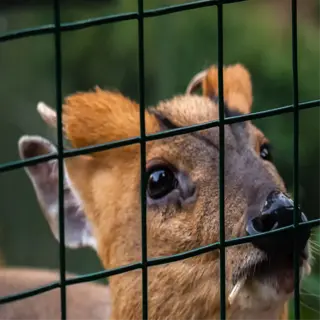
Hardware Cloth
- 19-gauge ½" (1.3cm) mesh size
- 48" (120cm) roll width
- Zinc-coated for rust resistance

Motion Sprinkler
- 35' (10.6m) detection range
- 120° motion sensor arc
- 8-hour quick-charge battery

Repellent Dispenser
- 6-month timed release cartridge
- Covers 500 sq ft (46 sq m)
- Rain-resistant casing
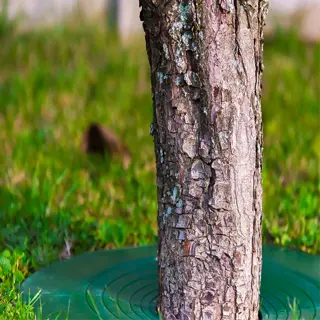
Tree Guard
- 4' (120cm) height protection
- UV-stabilized polypropylene
- Expandable up to 12" (30cm) diameter
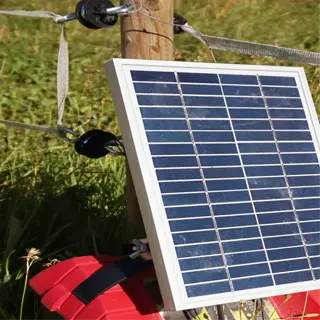
Electric Fence Kit
- 0.25 joule output for small pests
- 2-mile (3.2km) wire capacity
- LED status indicator
5 Common Myths
Chestnut trees need daily watering to thrive in containers
Overwatering causes root rot - established container trees only need watering when the top 2" (5cm) of soil dries out. Use the finger test: water deeply when soil feels crumbly at knuckle depth.
All chestnuts types will produce edible nuts in as little as 3 years
Most cultivars take 5-7 years to produce quality nuts. Seed grown trees may take 10-15 years. Even if you can produce a chestnut crop when they are small and poorly formed (years 3-4) they will not be suitable for roasting or blaming.
Chestnuts can grow in any soil type without amendments
They require well-drained soil with pH 5.5-6.5. Heavy clay needs 40% sand amendment; sandy soils require peat moss. Annual soil testing and micronutrient adjustments are crucial for nut production.
Indoor cultivation is impossible because of the space needed
Dwarf varieties, such as `Eaton', prefer 25-gallon (95L) containers with annual pruning. Use full-spectrum LED grow lights (14hr/day) and humidity domes for seedlings. Allow for a maximum height of 6-8' (1.8-2.4m) indoors.
Fully grown chestnut trees do not require winter frost protection
While established trees can survive down to -20°F (-29C), new growth can be damaged by a late frost. Wrap the trunks using tree guard tape whenever the forecast calls for conditions below 15 °F (-9 °C). After the first hard freeze, add 6" (15cm) of mulch to protect the roots.
Conclusion
The act of growing is a multigenerational commitment to chestnuts, one that will likely outlive the person who planted the tree, as in my grandfather's chestnut seedlings he planted from seed in the 1960s that now provide shade for my grandchildren. The trees will test the patience of their caretaker but return it tenfold; its history belongs to the family, its shade belongs to the forest, and its legacy will last for decades.
Striking the right balance between resting and acting. While some trees take around 7 or more years to grow nuts, if you prune your trees every year, you will be establishing a sturdy scaffold. During soil testing, you'll want to do this every 3rd spring to maintain acidity. I find it keeps the tempo going, the measurable care balances out the slow unfolding of branches and the beginning of fruits on a burred nut tree.
Every disease-resistant hybrid that we plant reinstates ecosystems. Their canopies act as shelter for native songbirds, and their roots help stabilize the slope. My project for erosion control on a slope in the Appalachian mountains reduced erosion by 40% while using chestnuts instead of pines. Start with Dunstan or Colossal cultivars, their vigor made demonstrated success more attainable with larger habitat goals in mind.
Start small, but start. An organic orchard, with two hybrids planted into good soil, taught me more than an old orchard in a vegetative condition. My first two hybrids provided nuts in the seventh year, and there was enough for roasting and reseeding. From that little beginning arose our current 50-tree grove, demonstrating stewardship multiplies.
External Sources
Frequently Asked Questions
Can I grow a chestnut tree from a nut?
Yes, chestnuts can be grown from nuts with proper cold stratification. Store seeds in damp sphagnum moss at 33-40°F for 2-4 months before planting. Ensure nuts are fresh and undamaged for successful germination.
How long does it take for a chestnut tree to produce nuts?
Most chestnut trees begin producing quality nuts in 5-7 years. Seed-grown trees may take 10-15 years. Hybrid varieties offer faster yields, while American chestnuts require more patience due to slower growth rates.
Do chestnut trees need another tree for pollination?
Chestnuts require cross-pollination between two different varieties. Plant trees within 200 feet of each other. Key pollination partners include:
- Chinese chestnut pollinators for hybrid varieties
- American chestnuts for native species
- Dwarf cultivars for small orchards
Can chestnuts be grown in containers?
Dwarf chestnut varieties thrive in 25-gallon containers with proper care. Use deep pots for taproot development and well-draining soil. Container trees require:
- Annual root pruning
- Full-spectrum LED lighting indoors
- Winter protection below 15°F
What climate is best for growing chestnuts?
Chestnuts grow best in USDA zones 4-8. They require 800-1,000 chill hours below 45°F and moderate summer humidity. Protect trees from late frosts and extreme heat above 95°F for optimal growth.
Are chestnuts and hazelnuts the same?
No, chestnuts (Castanea) and hazelnuts (Corylus) belong to different plant families. Key differences include:
- Chestnuts grow in spiny burs
- Hazelnuts form in leafy husks
- Chestnut trees grow 40-60 feet tall vs hazelnut's 15 feet
How do I protect chestnut trees from pests?
Use layered protection methods:
- Install ¼" hardware cloth cages around saplings
- Apply capsaicin-based repellents during nut development
- Use motion-activated deterrents for deer
- Wrap trunks with spiral guards against rodents
Are chestnuts safe for pets?
Raw chestnuts contain tannic acid which can cause digestive issues in dogs. Always cook nuts thoroughly and remove shells. Monitor pets for symptoms like vomiting if they consume fallen nuts from trees.
Why are some chestnuts hard to find?
Commercial chestnut production declined due to blight and labor-intensive harvesting. Homegrown chestnuts require 5+ years of care before yielding nuts. Fresh nuts spoil quickly, making distribution challenging without proper storage facilities.
What soil conditions do chestnuts need?
Chestnuts require acidic, well-drained soil with:
- pH 5.5-6.5
- 40% sand in clay soils
- Organic matter like peat moss
- Annual micronutrient supplements
